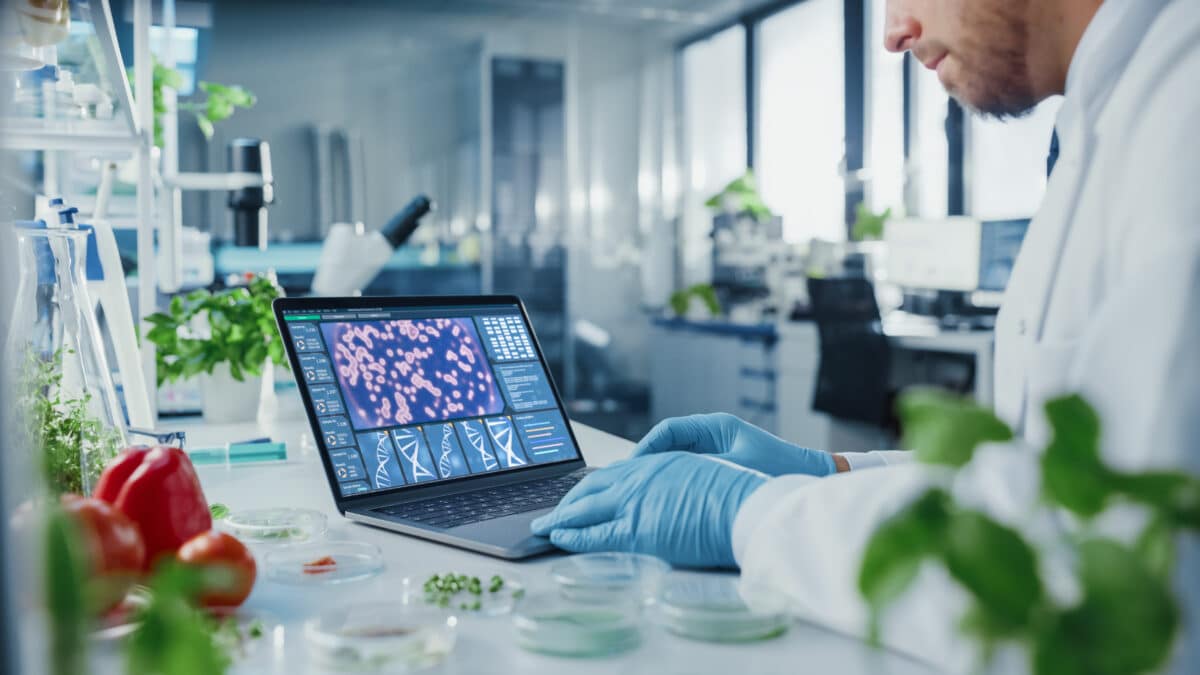Markmið verkefnisins Kolefnisspor íslenskra matvæla (KÍM) var að þróa samræmda og vísindalega aðferðafræði til að meta kolefnisspor íslenskra matvæla og framkvæma útreikninga á kolefnisspori fyrir valin matvæli: mjólk, nautakjöt, lambakjöt og grænmeti (kartöflur og gúrkur). Reikningar byggðust að meginhluta á lífsferilsgreiningu (LCA) samkvæmt alþjóðlegum stöðlum, en einnig var tekið mið af öðrum viðurkenndum aðferðum og regluverkum, svo sem PEF (e. Product Environmental Footprint) leiðbeiningar Evrópusambandsins og vöruflokkareglur (e. Product Category Rules, PCR), þar sem við átti. Gagnaöflun fór fram í samstarfi við innlenda framleiðendur og hagsmunaaðila. Þar sem frumgögn voru ekki aðgengileg var stuðst við alþjóðlega viðurkennda gagnagrunna til að tryggja samræmi og áreiðanleika. Verkefnið lagði jafnframt grunn að birtingu kolefnisspors í ÍSGEM gagnagrunninum og dregur fram mikilvægi samræmdrar gagnaöflunar og aðferðarfræði við stefnumótun og sjálfbærni í íslenskum matvælageira.
_____
The aim of the project Carbon Footprint of Icelandic Food Products (KÍM) was to develop a harmonized and scientifically sound methodology for assessing the carbon footprint of Icelandic food products and to carry out footprint calculations for selected products: milk, beef, lamb, and vegetables (potatoes and cucumbers). The assessments were primarily based on life cycle assessment (LCA) according to international standards, but additional guidance from frameworks such as the Product Environmental Footprint (PEF), and Product Category Rules (PCR) was also applied where relevant. Primary data was collected in collaboration with domestic producers and stakeholders. Where such data was unavailable, internationally recognized databases were used to ensure consistency and reliability. The project also laid the foundation for publishing carbon footprint data within the ÍSGEM food composition database and highlighted the importance of coordinated data collection and methodology in supporting sustainability and policy in the Icelandic food sector.
Tag: Food

Microorganisms are part of our food. However, knowledge of which microorganisms are found in food and in the production environment is still limited. A recent study, in which Matís participated, has provided new insight into this subject. The results will contribute to a better understanding of the effect of microorganisms on various aspects of food, such as shelf life, safety, quality and taste.
The study was part of the European project MASTER, which brought together 29 partners from 14 countries. One of the goals of the project was to create a database of microorganisms in food by sequencing genetic material from 2533 samples taken from various foods and their production environment. Matís was in charge of studying samples from Icelandic fish processing plants, but the research project covered all major food groups. This is the largest study ever conducted on the microbial composition of food and production environments, but a better understanding of these microbes could contribute to the improvement of people's health, as some microbes from food can become part of our microflora.
A total of 10899 food-associated microorganisms were identified in these samples, half of which were previously unknown species. The results showed that food-related microbes form an average of about 3% of the intestinal flora of adults and about 56% of the intestinal flora of infants.
"These results suggest that some of the microbes in our gut come directly from food, or that humans have historically acquired them from food, where they have later adapted and become part of the human gut flora," says Nicola Segata, a microbiologist at the University of Trento and the European Cancer Institute in Milan. Although 3% may seem like a low percentage, these microbes can have a major impact on the functioning of the intestinal flora. The database is therefore an important contribution to science and public health, as it will be useful for research on the effects of food-related microorganisms on our health.
Although few pathogenic microorganisms were identified in the food samples, there were several species that may be undesirable due to their effects on the taste or shelf life of foods. Knowledge of which microorganisms belong to certain foods can therefore be useful for producers, both large and small, to improve product quality. This information can also assist food control in defining which microorganisms should and should not be present in certain foods as well as tracking and certifying their origin. The results of the study were published last August 29 in the magazine Cell Press and the database is now accessible. Findings specifically related to seafood have also been published in the journal Heliyon, published by Cell Press. As mentioned above, the research is part of the European research project MASTER and was funded by Horizon 2020, Horizon Europe, the Italian Ministry of Foreign Affairs, the European Research Council, the Spanish Ministry of Science and Innovation, the Science Foundation of Ireland and the Irish Ministry of Agriculture, Food and Fisheries.
Development of goat products - Food
In the project, goat farmers were assisted in the development of new foods from goat raw materials. The product development campaign was introduced among goat farmers in collaboration with the Icelandic Goat Breeding Association. Goat farmers could apply for participation but Matís employees chose 5 farmers to continue. Matís employees provided assistance with licensing issues, the preparation of quality manuals and the entire product development process. The safety of the products was checked by microbiological analysis and nutrients were measured so that information on nutritional value could be presented. 17 foods were developed in the project, most from goat meat, but also products from liver and hearts as well as goat milk skyr. The project is expected to lead to an increase in food from goat raw materials on the market and this will gradually lead to an increase in the goat population.
In addition to product development, measurements were made of types of caseins (cheeses) in goat's milk. The casein alpha-s1 was detected to a significant extent and it can be concluded that Icelandic goat's milk is well suited for cheese making. Measurements were also made of minerals in goat's milk and trace minerals in goat meat. The results for these nutrients are useful in promoting the health of the products.
View report
Innovation small producers - Nordbio
The aim of the project was to follow up and further support small producers in the wake of innovation projects carried out under NordBio, the Icelandic Presidency of the Nordic Council of Ministers 2014-2016. The main goal of the innovation projects for small producers was to have a direct economic impact through innovation and value creation in the Nordic bioeconomy, thus strengthening regional economic growth. Work was done on 17 innovation projects. The experience of the projects is that knowledge and training are necessary for ideas to come true and for enabling producers to meet all food safety requirements. The Nordbio innovation projects have shown that the use of "innovation credit" can be an effective way to encourage innovation, knowledge transfer and technology to increase the value of living resources. There is a clear need to offer this type of grant to small producers and entrepreneurs in order to encourage innovation and unleash the power of imagination. It would be a great incentive to establish funds that can promote innovation in the spirit of the Nordbio projects.
The aim of the project was to follow up on and support further small-scale producers that participated in innovation projects as part of the Nordbio program, the Icelandic chairmanship program in the Nordic council of ministers 2014-2016. The overall objective of the innovation projects was to have direct economic impact through innovation and value creation in the Nordic bioeconomy and thereby strengthen regional and economic growth. 17 innovation projects where carried brought forward. The projects have displayed that knowledge and training is essential for ideas to be realized and to enable manufacturers to meet all food safety requirements. The Nordbio innovation projects have manifested that using "innovative voucher" can be an effective way of encouraging innovation, knowledge transfer and technology to increase the value of biofuels. There is apparently need to offer small producers and entrepreneurs funding of this kind. Establishment of fund under the same format as Nordbio functioned with innovation vouchers can enable increased value creation trhough innovation.
View report
Algae products. Hugmyndir að vörum / Food products from seaweed
Today, the large algae that are used for food in this country are mainly sold dried and processed. There has been little development in their processing and operation to this day. In order to encourage increased utilization and innovation in this field, information was collected on products of large algae on the market in other countries. What particularly hinders the growth of the food algae market here in Iceland and in the neighboring countries is that the tradition for their use has been limited to small and limited social groups. There are therefore many consumers who know little about the use of food algae and more often than not have a negative attitude towards them. The transfer of more traditional vegetable processing methods to algae and mixing in known, general, products such as pasta and rice or in prepared dishes can be a way of introducing food algae to a larger group of consumers.
Today seaweed exploited for food production in Iceland is mainly sold dried and / or cured according to tradition. With the aim to stimulate utilization and innovation in the sector, information was collected on seaweed products in several countries.
View report
Reform of the food value chain. Summary / Improvements in the food value chain. Roundup
It is known that a lot of waste takes place in the food value chain. There are many causes, such as incorrect product management, incorrect handling, broken cooling chain or insufficient cooling at some stage, broken packaging and countless many more. Food producers and retailers believe that such waste can be significantly reduced through the concerted efforts of all those involved in the value chain. In this way, food prices could be reduced significantly. The aim of the project was to identify where in the food value chain shrinkage takes place and to define measures to minimize the waste resulting from the shrinkage. Emphasis was placed on the value chain of one category of food: chilled meat products. Excessive or incorrect production and excess inventory of sensitive products were identified as one of the main causes of waste. Incorrect product handling and logistics are also important. A prototype of an information system was developed to improve production management and reduce inventory costs in the value chain. The results of the project indicate that high-quality and disciplined work methods in the entire value chain and a good flow of information between suppliers and retailers offer enormous potential for optimization, not least in the field of product management.
Great amount of waste is created in the food value chain. The reason is manifold; inadequate logistics, wrong treatment, inadequate temperature management, damaged packaging etc. Food producers and retail belief this waste can be reduced substantially by joint forces of stakeholders in the food supply chain, resulting in lower food prices. The aim of the project was to analyze where in the value chain waste is created and define actions to reduce it. Fresh / chilled meat products were chosen for the case study. The main sources of waste were identified as excessive production and inventory levels of persiable products, improper handling of products and raw material and problems with logistics. Prototype of decision support system was made to improve inventory and production management in the supply chain. The results indicate that elaborate and disciplined practices throughout the value chain and improved information sharing between suppliers and retailers can create opportunities for rationalization, especially in the field of logistics.
View report
Reform of the food value chain. Product mapping and product management / Improvements in the food value chain. Mapping of product process and logistics
This report addresses the first part of the Food Chain Reform project, the main objective of which is to identify where food degradation occurs in the food chain and to define measures to minimize the waste resulting from shrinkage. In this first part, emphasis was placed on analysis / mapping of the product process and product management, and it was divided into three work components that were carried out in parallel. All participating companies were visited. The work processes of the companies were reviewed, their facilities inspected and an opinion obtained on what could be done better in the process of chilled meat products from their point of view. It was examined what kind of information the companies have about the products, in what form they are and how they are used. It was also examined what information is received between links in the value chain, how it is received and what information / data from other links can help the party in question to better manage unnecessary shrinkage. Following this work, an analysis was made of the factors that were considered most important and proposals were formulated for improvements regarding procedures, information, measurements, etc.
This report discusses the first part of the project Improvements in the food value chain. The main aim of the project was to analyze where in the value chain waste is created and define actions to reduce it. In this first part emphasis was put on product processes and logistics.
View report
QALIBRA - Cluster Meeting Report and Minutes from the 2nd Cluster meeting of the QALIBRA and BENERIS projects
This project report describes a joint meeting of two European projects called QALIBRA and BENERIS. The meeting was held in Helsinki, Finland from 6 to 9 November 2007. Both projects fall under Priority 5, Food Quality & Safety in the 6th EU Research Program and share some work components. The purpose of the meeting was:
1) Audit of two EU regulators on the work of the projects for the first 18 months
2) Ensure the flow of information between projects and discuss ongoing collaboration
3) Comments and proposals of the reference advisory committee of the projects on the work and the continuation
QALIBRA, or “Quality of Life - Integarted Benefit and Risk Analysis. Web-based tool for assessing food safety and health benefits, ”abbreviated QALIBRA (Heilsuvogin in Icelandic), is a three-and-a-half-year project led by Matís. The project manager is Helga Gunnlaugsdóttir, department manager at Matís. The aim of the QALIBRA project is to develop quantitative methods to assess both the positive and negative effects of food ingredients on human health. The goal is to present these methods in a computer program that will be open and accessible to all stakeholders on the web. The aim of the BENERIS project is to create a methodology for dealing with complex benefit-risk situations, and then use them to assess the benefits / risks that certain types of food can bring. The first type of food that will be used in the development of this methodology is seafood. This report describes the discussions and the main conclusions of the meeting.
This report is a summary of the 2nd Cluster meeting of the QALIBRA and the BENERIS projects in Helsinki, Finland, November 6-9th, 2007. Both projects are funded by the EC´s 6th framework program, and have the same contract starting dates and a common workpackage (WP6) for cluster activities. Both projects began on April 1st 2006 and will run until October 2009, or for 42 months. This report contains results of the discussions that took place and the actions defined, while the overheads presented during the meeting are compiled in an Annex to the report. The overall objective of QALIBRA is to develop a suite of quantitative methods for assessing and integrating beneficial and adverse effects of foods and making them available to all stakeholders as web-based software for assessing and communicating net health impacts. The overall objective of BENERIS is to create a framework for handling complicated benefit-risk situations and apply it for analysis of the benefits and risks of certain foods. The first food commodity to be used in the development of the methodology is seafood.
The objective of the Cluster meeting was:
1) Evaluation (by two independent experts appointed by the EC) of activities from the beginning of the projects until the meeting
2) Sharing of information on scientific progress and plans between Qalibra and Beneris, as well as planning of further cluster activities
3) Obtain feedback and advice from the Qalibra / Beneris Scientific Advisory Panel (SAP)
This report contains results of the discussions that took place and the actions defined.




